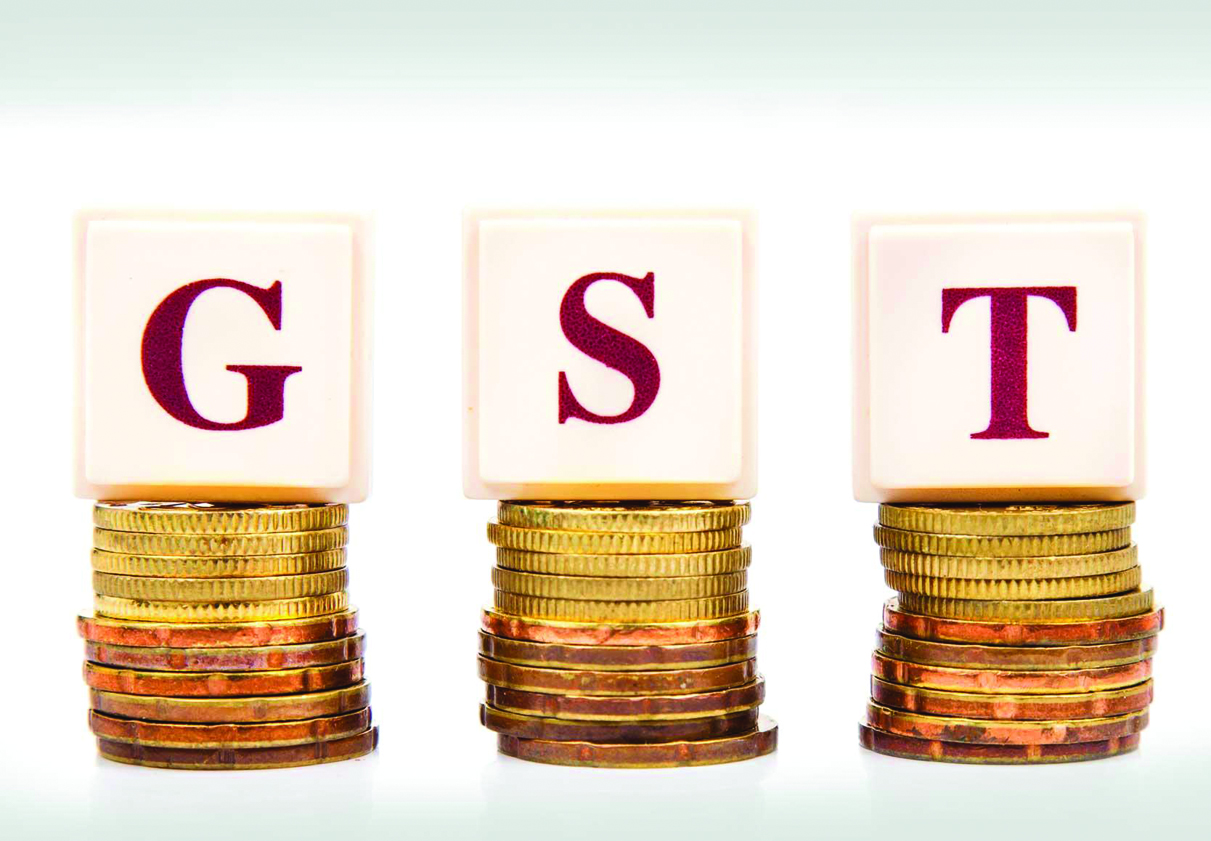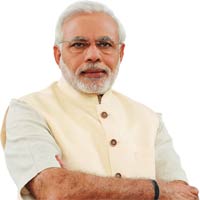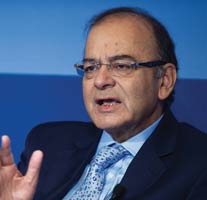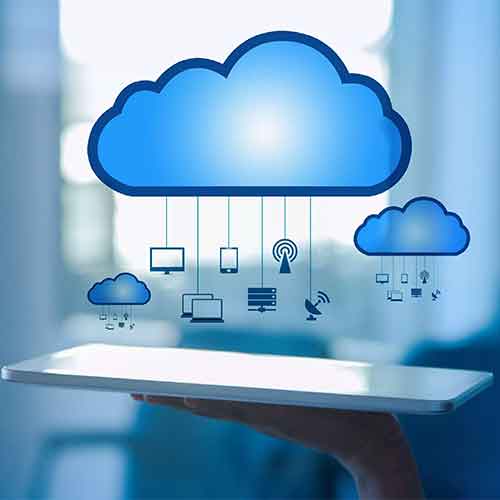GST – A big game-changer for the economy
2017-04-24
Touted as the biggest indirect tax reform since independence, GST would subsume central excise, service tax and other local levies. GST, the need for which is felt under the current indirect tax system, is expected to have a favourable outcome on the economy when rolled out in July.
The Rajya Sabha has recently passed four supplementary legislations which will purportedly enable the government to rollout the landmark Goods and Services Tax Bill on July 1. The four Bills are the Central Goods and Services Tax Bill, 2017, the Integrated Goods and Services Tax Bill, 2017, the Goods and Services Tax (Compensation to States) Bill, 2017 and the Union Territory Goods and Services Tax Bill, 2017. The Lok Sabha last month had approved the Central GST (CGST), Integrated GST (IGST), Union Territory GST (UTGST) and the Compensation to states law.
 “GST is a great step by Team India, great step towards transformation. This can’t be seen as a victory of a party or government, it is a win for the democratic ethos of India. We say a lot about corruption but to eradicate corruption it is important to strengthen our system as well,” PM Narendra Modi
“GST is a great step by Team India, great step towards transformation. This can’t be seen as a victory of a party or government, it is a win for the democratic ethos of India. We say a lot about corruption but to eradicate corruption it is important to strengthen our system as well,” PM Narendra Modi
Presently, a myriad of indirect taxes are levied in India without the ability to claim credit of such taxes by different persons that leads to a situation of cascading effect of taxes. Amongst others, with the introduction of GST, the cascading effect to a large extent should be addressed. Accordingly, it is expected that the GST regime would have a positive impact on the economy in the long run.
“GST shall provide the much needed stimulant for economic growth in India by ensuring the free flow of goods and services within the economy and also eliminating the cascading effect of different taxation. It might also increase the administrative costs. One Nation, one Tax will enable abolishment of entry tax, LBT, Octroi etc. It will enable businesses to move into different geographies seamlessly. Also, with the introduction of electronic payment structure, it will ease the process of conducting business for IT companies,” says Sudip De Director - Doel International.
 “GST, in the days to come will ensure much larger revenues as far as states and the central government is concerned and expands the size as far as the formal economy is concerned. New indirect tax regime will make India one single market, eliminate multiple assessments, check evasion and bring more revenues into the system. I am glad that almost all state governments have actively co-operated in making this a reality,” Finance Minister Arun Jaitley.
“GST, in the days to come will ensure much larger revenues as far as states and the central government is concerned and expands the size as far as the formal economy is concerned. New indirect tax regime will make India one single market, eliminate multiple assessments, check evasion and bring more revenues into the system. I am glad that almost all state governments have actively co-operated in making this a reality,” Finance Minister Arun Jaitley.
GST would provide tax credit to the manufacturer. Various tax barriers such as check posts and toll plazas lead to a lot of wastage for perishable items being transported, a loss that translated into major costs through higher need of buffer stocks and warehousing costs as well. A single taxation system could eliminate this roadblock for them. A single taxation on producers would also translate into a lower final selling price for the consumer. Also, there will be more transparency in the system as the customers would know exactly how much taxes they are being charged and on what base.
 Anwar Shirpurwala, Executive Director at Manufacturers Association for Information Technology (MAIT)
Anwar Shirpurwala, Executive Director at Manufacturers Association for Information Technology (MAIT)
“The revised Model GST law contains enabling provisions for anti-profiteering in order to ensure that the additional benefit available to industry inter alia on account of removal of cascading effect of taxes, rate of GST, etc, are passed on to the end consumer. The same would have a huge impact on the industry at large as they would be duty bound to ensure that the benefits on account of GST is passed on to the end consumer.”
“Indeed, the end consumer is to benefit to a good extend. Trade across the states will become simple with hassle free documentation. Indirect benefits of not needing a branch/warehouse for local taxation advantage is a cost benefit. E-commerce commercials / logistics will be at the best with uniform taxation. The GST % can be kept at lower side, since we are in the beginning of the digital money era, the price advantage can increase affordability and usage,” says T. Jayakumar, Director - Touchline Technologies.
However, currently services attract 15 per cent service tax (including cesses). This is likely to increase to 18 per cent under GST. This means there will be additional working capital requirements to manage the cash flows for the period between invoicing and payment realization.
 Nimish Goel, Head Indirect Tax Practice and GST, International Business Advisors
Nimish Goel, Head Indirect Tax Practice and GST, International Business Advisors
“GST should bring additional business opportunities to a large IT companies. Software and ERP development companies stand to gain the most since every company now need to overhaul its existing IT/ERP system. Additionally, the GST Council has also come up with the concept of GST Suvidha Providers (‘GSP’) who will act as mediators between taxpayers and Government.”
“Quantitatively, experts are of the opinion that the GDP is expected to rise by 1% to 2%. However, in the short run, it is expected to be disruptive due to transition issues while migrating into the new regime,” reiterates Anwar Shirpurwala, Executive Director at Manufacturers Association for Information Technology (MAIT).
Impact of GST on the IT industry …..
According to Alok Dubey, CFO, Acer India, considering the overall IT industry, there is not any major impact seen on the goods as the proposed rate of 12% and 18% is almost the same of the combined rate of Duty and local VAT; however, the services are getting pushed to 18% seems to be more expensive. “The foremost impact would be on software exporters, as most of the companies are engaged in export of software and having very negligible domestic sales. The present rate of service tax on the input services availed by these companies is presently levied at 15% is now proposed to levy at 18% under GST and the biggest challenge is utilization of unutilized GST credits. Even though in the proposed draft GST law automatic refund of 80% amount is granted when claim is submitted but it shall affect the Company’s Cash Flow. Further, the cost of compliance may increase due to requirement of separate registration under model GST Law for the Service providers as against the centralized registration and compliance under the present law. The industry still hopes that the new law shall allow easy transfers of service tax credits from one state to another.”
 Rushabh Shah, President - Trade Association of Information Technology (TAIT)
Rushabh Shah, President - Trade Association of Information Technology (TAIT)
“When the GST bill finally rolls out on July 1 this year, it will transform the system of taxation in India by replacing all indirect taxes levied on goods and services by the Indian Central and state governments. Although GST has been touted as a simplified and easier tax regime, which it is, but all sectors are bracing up for a few surprises also. The entire concept of availment of input tax credit is all set to change.”
Pulkit Punj, Director, AnG India has also been of a similar opinion. “I believe that the multiple registration GST model will affect the internal business of the IT industry. Also, the industry has been discussing about the challenges of this new law model as it could leads to increase the complexities in the industry and the process as well.”
With GST on the cards, players in the IT industry are streamlining their existing system of distribution and retail marketing, and are also reworking their channel strategy, preparing cash flows, etc. Distributors in the IT industry are, on the other hand, keeping a check on their stocks, are downsizing their inventories, and are also putting their accounting system in place.
 Gopal Pansari
Gopal Pansari
Director - Savera Digital India
“There is no immediate impact of the GST bill as everything depends on the final GST bill that will be implemented. The most important impact will be that the IT distributors need to change their distribution model to take most out of new structure. Channel managers and sales executives will be hearing less conflict issues due to price differences caused by local taxes.”
“As we move towards one nation, one tax, IT companies with operations in multiple cities will probably have one physical branch to handle billing in different states. Invoices in this sector are reconciled only after the payments are made for transactions that are complete, but with GST, recording every invoice will be the responsibility of IT companies. The input-tax credit can be a pain point for the SME sector though. Software is at present taxed twice in India--service tax and VAT. As a case in point, in the state of Maharashtra, total tax on software is 15 per cent as paper license or service tax and 6 per cent as value added tax, or VAT, which adds up to around 21 per cent on base rate. Post GST, this will come down to 18 per cent. Essentially, small is not always beautiful from GST's prism because below a threshold IT companies do not get the benefit of the input,” explains Rushabh Shah, President - Trade Association of Information Technology (TAIT).
 Sanjay Joshi
Sanjay Joshi
Country Manager at Edimax India & Sub Continent
“It’s great that now all taxes would come under a single scheme. GST is intended to move all indirect taxes but it may create a problem in trade and commerce for the manufacturers who are manufacturing in different parts of the nation. But indeed it will surely bring transparency in the business and for the customers which will, in turn, eliminate corruption.”
According to Gopal Pansari Director at Savera Digital India, in order to accelerate digitization, GST seems to be a pronounced tax reform which will now follow destination based tax structure instead of origin based. “GST will surely reduce the average tax rate. By registering for all the states we are catering to, we expect ease in the business processes. Our business will surely be benefited as it will help in eliminating the spurt effects of the present tax structure and will allow free flow of goods and services within our country.”
 Alok Dubey
Alok Dubey
CFO - Acer India
“With the adoption of GST there is a huge scope to address tax policy and compliance. The law, giving enough incentive for companies to declare transaction in order to claim tax credits will reduce overall tax evasion. Businesses will have only State and Central GST Departments to deal with instead of variety of state and central departments-bringing down- hopefully, disputes, litigation and cost of compliance.”
Similar views are also of Sanjay Joshi Country Manager - Edimax India & Sub Continent, who feels that GST is a biggest game changer and reforms India’s indirect tax structure. “The amalgamation and comprehensive tax structure introduced will surely help in boosting GDP. The Introduction of GSTN enabled software’s and new methods of electronic payments will surely help in carrying out the business process with accuracy, speediness and seamlessness. Services sector in India is a rapidly growing and significantly contributing sector to fiscal revenues.”
“Unlike the product market, IT industry taps on their services. In the present scenario, IGST, CGST and SGST are in decentralized place varying as per the location. Through the unified centralized format, it becomes easy for the regulatory authorities to maintain an easy track of where the incoming claims are from. This ensures transparency for the service receivers as to what exactly they are paying their taxes for. One centralized platform also ensures that the decentralized compliances get accurate tracking. Through the centralized system, the service providers can now be able to provide at a final lower selling price to the service receiver,” views Aniketh Jain, CEO & Co-Founder of Solutions Infini.
 Pulkit Punj
Pulkit Punj
Director - AnG India
“Some provisions of the constitutional amendment bill on the goods GST could undermine the competitiveness of India’s IT industry and have the potential to spark disputes and litigation. I consider that complex billing and invoicing requirements due to supply and valuable provision of the GST could complicate the taxation procedure for our industry. Currently, we are governed by single regime but new complex GST bill will give a huge impact on our industry.”
The creation of uniform market across the country will make doing business in multiple sates easy. Elimination of multiple levies for IT companies and creation of a uniform tax system across the nation will cause deeper penetration of digital services. “IT service providers would be able to set-off input GST on purchase of Goods required for setting up the necessary IT infrastructure with their GST output liabilities. This may lower the prices of IT services and benefit the end user in long run. The compliance has become a lot easier. Laws are not that ambiguous,” points out Sudhir Singh, Managing Director, Marg Compusoft.
 Sudip De
Sudip De
Director - Doel International
“GST would provide tax credit to the manufacturer. Various tax barriers such as check posts and toll plazas lead to a lot of wastage for perishable items being transported, a loss that translated into major costs through higher need of buffer stocks and warehousing costs as well. A single taxation system could eliminate this roadblock for them. A single taxation on producers would also translate into a lower final selling price for the consumer.”
“GST, with the Uniformity of tax rates and structures and all tax payer services would be available to the taxpayers online, which would make compliance easy and transparent for business owner. This transparent indirect tax regime is widely expected to accelerate overall growth of GDP in India; this may create benefits of spin off for IT business,” asserts Sanjeev Gulati, Country Manager-India & SAARC -VIVOTEK.
“With the GST coming in, we may see certain changes in the IT industry where the taxation structure on companies like ours will get rationalized. Presently, companies are paying two types of taxes one being the service tax and the other is the VAT. Once GST is rolled out, we believe that this issue will be resolved and a single tax will be applied. This will help significantly in reducing compliance effort and costs,” says Girish Rowjee- Co-founder &CEO, Greytip Software.
There is a significant push from the Government to move to a less-cash economy resulting in a lot of physical transactions moving online. In order for this to happen, IT companies would need to play a pivotal role in creating new and innovative solutions. Additionally, the Government will want to incentivize both IT companies and consumers in this process. For all the above reasons, the introduction of GST will lower tax rates for the IT and Software industry and enabling adoption due to reduced cost of software.
 Sudhir Singh
Sudhir Singh
Managing Director, Marg Compusoft
“A common market would be created across the nation. It will create a level playing field for all. The digitization and clarity of laws will bring transparency which will create ease of doing business.”
Putting across similar views, Niraj Hutheesing is the Founder and Director - Cygnet Infotech says, “What is seen as a setback for tax-payers due to complete digitization, this move by Government is to eradicate the cascading tax policy and smoothen the tax-structure with a flat system. Software and services sector face a major challenge of setting up huge datacenter to cater to the huge chunk of data, best in-class IT infrastructure, eminent knowledge pool and skill set to develop intuitive software solutions, closely working with chartered accountants – learning the ropes for financial systems, in-depth know how of financial world and taxation and lot more.”
 Aniketh Jain
Aniketh Jain
CEO & Co-Founder - Solutions Infini
“The Centralised GST system can be beneficial to companies providing services from a unified location. However, there are numerous provisions that can impact the industry at large – eliminating multiple levies for IT Companies, free flow of goods across the country, increased opportunity for Vendors, double Taxation elimination, and so on.”
"GST is really great and it has greatest benefits that it is built ground up as a technology-enabled-tax-system which allows for extraordinary traceability. Being technology led, it has the potential to spiral upwards the trust deficit, rather than spiral downwards. However, one of the major drawback or the most critical cause of potential failure of GST will be in the transference of responsibility of tax compliance and remittance to the customers to make them eligible for input credit," opines Bharat Goenka, Co-Founder & MD - Tally Solutions.
Limitations still persist…
The passage of the GST bill will unquestionably usher in the most impactful tax reform; however, there are few limitations to it.
Like for instance, as Alok points out, the draft law is yet to give full clarity on transition provisions. “Especially for trading community, there may be loss of credit contained in inventory in hand to the extent of excise / customs duty paid thereon. Unless an effective credit is allowed, the economic activity across trade leading upto the July 01 shall be rather slow as traders shall minimize their stocks. For the IT hardware industry the free spare parts replacement under warranty may require double /multiple GST payment as the new GST law fails to clarify the position yet,” says Alok.

T. Jayakumar
Director - Touchline Technologies
“With GST, consumer states will Rule The Roost and overall development will be higher in those states. The GST % can be kept at lower side, since we are in the beginning of the digital money era, the price advantage can increase affordability and usage.”
“The Government is still deliberating on the mechanism to be adopted to perpetuate “Make in India” under the GST and no concrete framework has put together in this regard. In order to reduce the import burden it is essential that the ‘Make in India’ scheme be extended to all ITA goods, specifically to notebooks, desktops, servers and storage. Possible recommendation for continuation of duty differential scheme under GST,” suggests Anwar. “A negative list of ITA goods is introduced on import of which (for trading) no credit of CGST portion of IGST would be permissible. Additionally, benefit of upfront exemption from levy of CGST be provided on the goods manufactured in India; or the benefit may be extended by way of a refund mechanism wherein refund of CGST would be available to manufacturers.”

Sanjeev Gulati
Country Manager-India & SAARC - VIVOTEK
“For IT software currently attracts different levels of tax. Under GST this dual taxation and cascading effect would reduce significantly and the benefits could accrue to end user in the form of lower prices.”
According to Pulkit, the new multiple registration GST model is costlier and it’s the biggest disadvantage as well as challenge for us. “If I talk about current service tax in India is 15% but due to proposed GST, it’s about 18%-20%. According to me previous (single regime) GST model was much better and simple for us.”
Says Aniketh, “It can be substantially challenging for the legal system to get the centralized platform into execution. The process like any other is complex and time consuming. It’s also challenging to the system to get approval from 15 states once the Constitution Amendment Bill is passed by the Parliament.”
The current taxation system has clearly defined the powers of state and center in terms of levy and administration of taxes. As the GST will have a dual control model and being introduced as a new law, there is expected to be more litigation in terms of jurisdiction of state and center for interstate transactions. “The place of supply provision will require registration in more state, if the delivery is made through offices located at different places. Currently the law is very clear in terms of input tax credit process and most of the companies are aligned with the current system. Going forward, if the existing companies cannot change their sourcing or distribution strategy, they will find it difficult to take proper advantage of input credit. In the current taxation system, input credit is available on tax invoice however with the implementation of GST; input credit will depend on filing of the returns by the vendor on time. It would be really difficult to deal with small suppliers and large companies may avoid dealing with small suppliers to reduce the risk,” says Girish.
 Girish Rowjee
Girish Rowjee
Co-founder & CEO, Greytip Software
“Implementation of GST will be a big relief for the industry at large by providing ease of doing business. Presently industry has to pay various taxes on a single product which consists Central taxes such as Central Excise duty, Additional Excise duty, Service tax, Additional Custom duty and Special Additional duty as well as state-level taxes such as VAT or Sales tax, Central Sales tax, Entertainment tax, Entry tax, Purchase tax, Luxury tax and Octroi. These taxes will subsume in GST which will help in reducing administrative work involved for compliance under different laws.”
“Multiple slabs of taxes are not as expected. The way bureaucracy is involved in most of the things, it seems the Red-Tapism is not going to be reduced. The lack of unity amongst different departments is also a matter of concern,” opines Sudhir.

Bharat Goenka
Co-Founder & MD - Tally Solutions
"With the framing of this law, the Government hopes that the market will self-weed out the bad eggs. While in theory this is fine, not understanding the cascading consequences of doing this in practice, and the mayhem it will create is an alarming concern."
Compliances under the GST shall increase multifold typically for those companies that have multiple offices in India and from where services are supplied to the customers. This is because each and every office that is engaged in supplying a taxable service shall be required to be registered separately under GST. This is unlike the current scenario where all offices could be combined together and registered under a centralized system for service tax. Separate registrations shall mean maintaining separate books of accounts, separate payment of taxes and filing multiple returns. All this is going to increase the cost of IT companies drastically.

Niraj Hutheesing
Founder and Director - Cygnet Infotech Pvt. Ltd.
“The biggest implication of GST on IT is industry is – Tons of new business! GST is a bigger wave than Y2K problem. When in Y2K the 4-digit was resolved easily with a 2-digit replacement, GST is a SEA-CHANGE! While Y2K bug impacted the entire IT system, GST implementation will impact all ERP systems for all clients active within the GST network. Implementing IT in GST will make faster and speedier refunds for exporters - a less bureaucratic way of working and remove the need for taking multiple different registrations under VAT, Excise and Service tax.”
Nimish points out that the challenge shall be to issue multiple invoices. “This is a paradigm shift from the way IT companies operate currently with a single registration and filing of two returns annually. Under GST the no. of returns to be filed for each registered office shall be 37 per annum.”
He further says that e-commerce companies (that are not engaged as mere aggregators) and undertaking millions of transactions shall be required to deduct 'tax collection at source' (TCS) on all supplies made by the vendors through their websites. “This means a very strong and a robust monitoring of the transactions to ensure every supply is subject to TCS. This definitely means making the IT system capable of recording each and every transaction on a timely basis to ensure correct adherence to the law.”
Samrita Baruah
samrita@varindia.com
See What’s Next in Tech With the Fast Forward Newsletter
Tweets From @varindiamag
Nothing to see here - yet
When they Tweet, their Tweets will show up here.




























